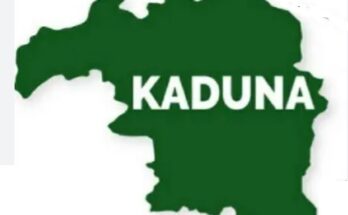More than 100 girls are still missing after they were abducted from their school in the north-east Nigerian town of Chibok in 2014 by militant Islamist group Boko Haram.
Originally, 276 were kidnapped, sparking one of the biggest global social media campaigns, with tweeters using the hashtag #BringBackOurGirls.
Some managed to escape shortly after they were seized, while about 100 have been freed in exchange for Boko Haram militants, in negotiations brokered by the International Committee of the Red Cross (ICRC).
How were they kidnapped?
On 14 April 2014, Boko Haram militants attacked a government secondary boarding school in Chibok, Borno state, where girls from surrounding areas had gone to take exams.
Many schools in the region had shut down. Boko Haram was targeting them because of their opposition to Western education, which the militants believe corrupts the values of Muslims.
But Chibok had not been attacked before, so it was felt safe to use the school for the important final year exams. Many of the pupils were Christians.
The gunmen arrived in the town late at night in a blaze of gunfire and headed for the school where they raided the dormitories and loaded 276 girls on to lorries.
Some managed to escape within hours of their kidnapping, mostly by jumping off the lorries and running off into the bushes.
In total 219 girls were taken away.
Why were they taken?
One of those who did escape told the BBC Hausa service the militants had said: “You’re only coming to school for prostitution. Boko [Western education] is haram [forbidden] so what are you doing in school?”
The abduction and the blaze of publicity that followed came as Boko Haram was growing in strength and capturing territory.
Captives from the villages they were taking over were generally put to work, the boys as fighters while women and girls were often forced to become wives of men in the group.
For two years, little was heard of the 219 girls. Then in May 2016, an army-backed vigilante group in the Sambisa Forest, a Boko Haram stronghold close to the border with Cameroon, found one of the girls with a child.
Two other girls managed to escape in September 2016 and January 2017.
October 2016 saw the first mass release with 21 girls being freed following negotiations between the government and Boko Haram, brokered by the ICRC.
It is believed that Boko Haram prisoners were freed in exchange.
Then in May 2017, another 82 girls were freed, once again with the help of the ICRC.
This leaves 113 girls who are still unaccounted for. It is believed that they are still being held by Boko Haram, although there are reports that some may have died.
When have the girls been seen?
Three videos have been released to date. On 14 August 2016, a Boko Haram tape showed about 50 of the girls and contained a demand for the release of imprisoned militants in exchange for them.
In April 2016 a video was broadcast by CNN, which appeared to show some of the kidnapped schoolgirls alive. In May 2014, Boko Haram released a video of around 130 girls gathered together reciting the Koran.
Boko Haram leader Abubakar Shekau has said all the girls have converted to Islam and had been “married off”.
Last year, three women who claim they were held in the same camps as some of the Chibok girls told the BBC some of them had become fighters – though this testimony has never been verified.
In February 2015, the Nigerian military launched a major offensive against Boko Haram which had controlled large parts of the north-east of Nigeria.
Nigeria was backed by a regional forces and has also had help from the US, UK and France.
The militants have now lost nearly all their territory and have switched tactics to carrying out suicide bombings against the military and civilians.
But if the remaining girls are still being held in one place, that has not been found.
President Muhammadu Buhari said that the government “will spare no effort to see that they and all other Nigerians who have been abducted safely regain their freedom”.
Source: BBC News.com



